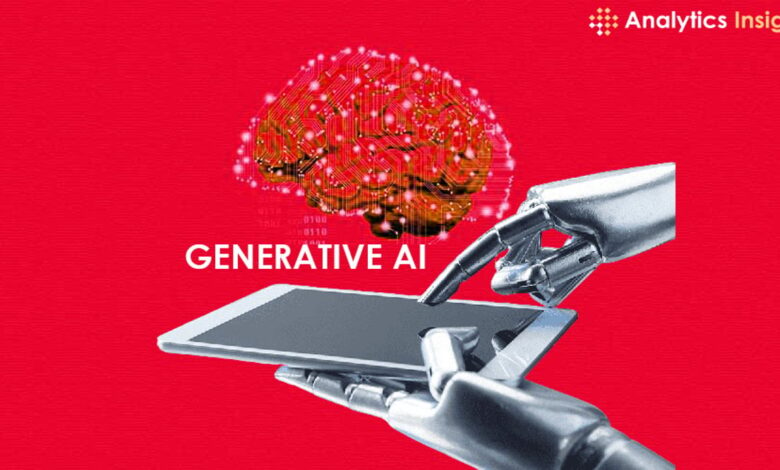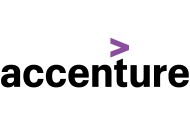How Generative AI Tools Transform Service Accessibility

Generative AI tools are no longer a novelty; rather, their transformative power has made an indelible mark in every sector and virtually revolutionized every aspect of our lives. One of the areas where the impact of these tools is quite evidently profound is service accessibility. As all kinds of businesses and service providers scramble to provide the best customer experience and reach as many clients as possible, Generative AI has truly broken barriers to enable unlimited access to services. This paper discovers and discusses the far-reaching implications of Generative AI tools for service accessibility by examining how these scientific wonders are changing sectors, empowering service users, and transforming accessibility as we know it.
Overview of Generative AI Tools
Generative AI tools have enabled a new wave of service accessibility by utilizing advanced machine learning technologies to offer novel ways to access info and personally adapted user experiences. From natural language generation to speech synthesis and image or video generation, generative AI can support broad ranges of user needs. The generative AI automatically creates text-based materials, converts text into speech, and develops text alternatives for visual data, thus increasing accessibility in diverse settings such as education and customer service. Additionally, these programs use data augmentation approaches and personally relevant adaption to enhance the strength of AI services by creating personalization. AI systems guarantee that customers receive the services they require while also increasing widespread access and inclusion.
Moreover, generative AI models drive conversational technologies such as chatbots, including virtual assistants and content recommendations, and support service accessibility through user-specific instances and conversational systems. Conversational interfaces enable users to receive assistance or prompt responses to their questions from generative content creation systems. The conversational systems are trainable and adjust to the user’s feedback, making the experience more seamless and inclusive. When they generate pertinent recommendations and filter search results based on the user’s interests, they adapt their responses to users. Generative AI also enhances service accessibility by creating unique possibilities for persons with disabilities.
Increasing Role of GenAI in Various Sectors
GenAI increasingly powers aerospace, defense, mining, packaging, energy, and government services. Based on the provided readings, the following insights can be derived:
Industry 4.0 Transformation:
Generative AI (GenAI) drives industry 4.0 transformation in operational processes. GenAI reshapes manufacturing, supply chain, and product design processes with unique creativity and efficiency combinations. In the aerospace and defense sector, GenAI allows simulating and optimizing complex systems, which results in increasingly more efficient aircraft design and mission planning. The same applies to mining, where GenAI optimizes exploration and extraction, safety measures, reclamation, and environmental impact reduction via predictive analytics and automation.
Government Services
GenAI transforms government services in the public sector through increased efficiency, accessibility, and management. Governments will increase efficiency through platforms that provide customized experiences to citizens and relatively open governance methodologies. For example, chatbots and virtual assistants powered by GenAI connect citizens and government organizations. Chatbots and virtual assistants provide quick access to help and answer queries. GenAI helps decision-makers make data-based decisions, including policy decisions and funds assignment to public services. Governments use GenAI to become efficient administrations, deliver quality services, and build responsive, satisfied citizens.
Business Applications:
GenAI is transforming business practices to optimize operations, improve customer experiences, and boost revenue generation among various applications. In the packaging industry, GenAI makes it easier to manufacture products, design packaging, and minimize waste via predictive modeling and optimization algorithms. In the energy and power sector, GenAI allows infrastructure to carry out predictive maintenance, distributes energy and reduces downtime through continuous monitoring and analysis. Finally, in the personalization of customer experience and fraud detection, businesses can create custom experiences, identify irregularities, and reduce risk, improving customer satisfaction. Therefore, according to the application trends, businesses that deploy GenAI will have a compounding advantage.
Sectoral Impact
However, with its expansion to other sectors, it renders both anticipation and skepticism. In fact, some people have showed concerns but others acknowledge the benefits. In particular, most workers are concerned about competition and the invasion of privacy while others has acknowledge their benefits. Overall, GenAI usage, coupled with regulation and ethical training, promises to build industries that define new virtues of sustenance.
How Service Accessibility Intersects with AI
It is the groundbreaking advancement of inclusivity that the intersection of service accessibility and AI brings, especially for those with disabilities. AI-powered assistive devices are transforming the way that individuals with disabilities gain access to services within various sectors, thus unlocking uncharted opportunities. In the sector of employment, for instance, AI tools such as speech recognition software and predictive text input have facilitated learning about various types of work. Due to such AI tools, it has become easier for someone with a mobility disability to control a computer by the simple use of voice commands using speech recognition software. A similar tool, predictive text input, enables speech-disordered individuals to communicate, all of contribute to workplaces that are inclusive and diverse.
Moreover, the innovative nature of AI-based technologies ensures that their efficacy improves with time. AI algorithms learn and understand the user’s interaction with the system, the feedback provided, and user preferences to enhance their functional capabilities to meet the unique needs of persons with disabilities. This means that in the version to come, the text-to-speech transformation process will be more accurate, faster, and user preference-based, such as same speech voice settings. Similarly, the captioning and translations rate and accuracy process will improve the caption quality and speed up the video translation process. The development of more inclusive and productive systems is better for persons with disabilities.
Potential of Generative AI Tools in Enhancing Service Accessibility
Numerous generative AI tools, such as ChatGPT and Bard, have substantial potential for ensuring the accessibility of digital services and experiences:
Improving Website Chatbots for Natural Conversations:
Generative AI may significantly improve website chatbots by making conversations more natural. This will enable website visitors to ask questions, request information, and navigate websites more freely and easily. Consequently, generative AI chatbots would be able to understand the user’s intent and context, offering more personalized help more effectively. In doing so, they would help people with disabilities, such as visual and motor disabilities, in accessing the content more easily.
Integrating Text-to-Speech and Speech-to-Text Conversion:
By utilizing the functionality of such conversions, generative AI chatbots can help users with low vision or hearing. This feature helps to solve accessibility issues by converting written content to audio and vice versa, thus providing an opportunity to perceive web content. People with vision difficulties can listen to what a website says, while people with hearing loss can speak to the chatbot input text and get an answer. Thus, the generative AI-powered chatbot ensures that information and services are available to all users.
Rephrasing Complex Content for Cognitive Accessibility:
The use of generative AI tools can rephrase complex or technical content. This means that individuals with cognitive disabilities or language barriers and individuals who prefer plain language can use the rephrased content. It is through these accessible modes of presentation that a wider audience can understand and use the website; hence, everyone interacts with the website content appropriately.
Automatically Generating Alt Text for Images:
Generative AI can automatically generate alternative text (alt text) descriptions for images, addressing a task that is often neglected but crucial for screen reader users. Alt text provides textual descriptions of images, enabling individuals with visual impairments to understand the content of images when using screen reader software. By automating this process, generative AI streamlines website accessibility efforts and ensures that all users can access and comprehend image content.
Identifying and Remedying Accessibility Issues:
Generative AI tools can scan websites, identify accessibility issues such as poor color contrast or missing alt text, and provide detailed remediation recommendations for developers to address these problems. By proactively identifying and addressing accessibility barriers, these tools empower developers to create more inclusive and user-friendly websites, improving the overall accessibility of digital content and services.
Educating Developers on Accessibility Best Practices:
Generative AI chatbots can educate developers on the importance of accessibility and guide them in making websites more accessible, helping address the lack of knowledge and resources in this area. By providing real-time guidance and recommendations during the development process, these chatbots empower developers to implement accessibility best practices and ensure that their websites are accessible to users of all abilities. This proactive approach to accessibility education fosters a culture of inclusivity and drives continuous improvement in web accessibility standards.
FAQs
1. How can generative AI be used in customer service?
Generative AI in customer service enhances productivity by automating routine tasks like answering queries and providing personalized recommendations, improving customer satisfaction and agent efficiency.
2. How does generative AI affect IT services?
Generative AI is revolutionizing IT services by enhancing productivity, customer experiences, and innovation. Organizations are leveraging large language models (LLMs) and foundation models (FMs) to develop generative AI applications tailored to their data and use cases.
3. Is generative AI accessible?
Generative AI has the potential to enhance accessibility, especially for individuals with disabilities, by providing personalized and innovative solutions to address their unique needs.
4. How AI is improving customer service?
AI is significantly enhancing customer service by revolutionizing interactions, improving satisfaction, and contributing to high-quality customer experiences.
5. How AI can influence accessibility?
AI plays a crucial role in influencing accessibility by providing innovative solutions to address the unique needs of individuals with disabilities. Through various AI technologies, accessibility can be enhanced in different ways.



